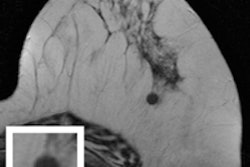Functional MRI (fMRI) has detected changes in the brains of teenagers that could explain why teens may take more risks.
The findings were presented earlier this week at the American Association for the Advancement of Science (AAAS) annual meeting in San Jose, CA.
Beatriz Luna, PhD, from the University of Pittsburgh, and colleagues used a model in which eye movements are tracked to reveal insight into executive brain function. In the study, volunteers were asked to immediately look away from a small light that randomly appeared on a screen in front of them. The test shows if the brain can overcome the impulse to look toward the light; in previous research, children were least successful at the task, while teenagers were about 70% successful and adults were about 90% successful.
The study team scanned the volunteers' brains with fMRI while they performed the exercise. While much of the architecture of a mature brain is in place by adolescence, the ability of the networks to talk to one another and integrate information is still developing, Luna and colleagues found.
"Our findings indicate that the teen prefrontal cortex is not much different than in the adult, but it can be easily overruled by heightened motivation centers in the brain," Luna said in a statement. "You have this mixture of newly gained executive control plus extra reward that is pulling the teenager toward immediate gratification."



.fFmgij6Hin.png?auto=compress%2Cformat&fit=crop&h=100&q=70&w=100)




.fFmgij6Hin.png?auto=compress%2Cformat&fit=crop&h=167&q=70&w=250)











